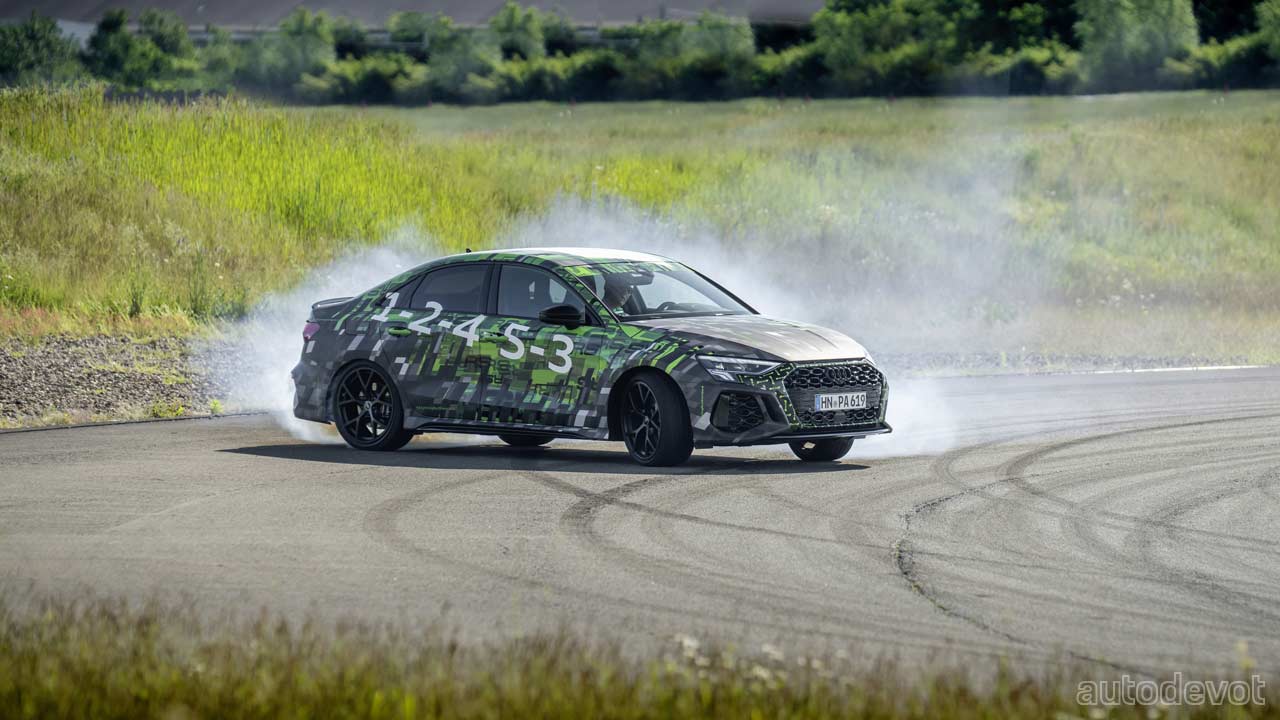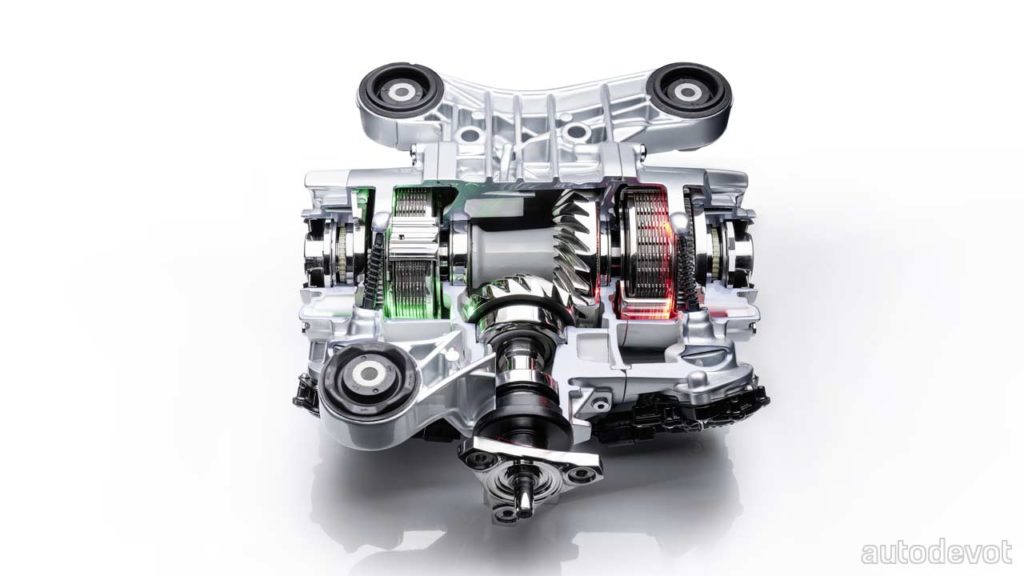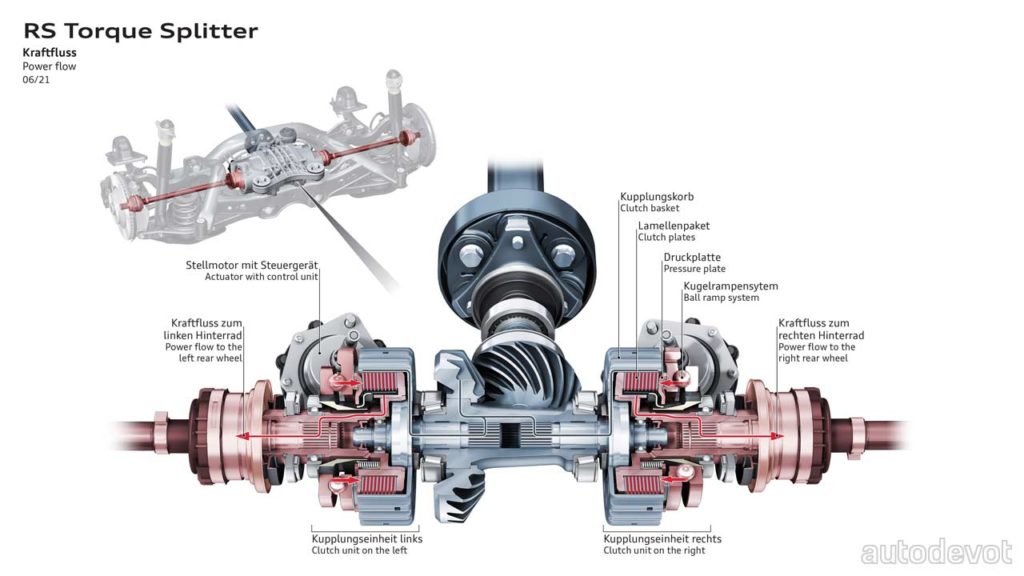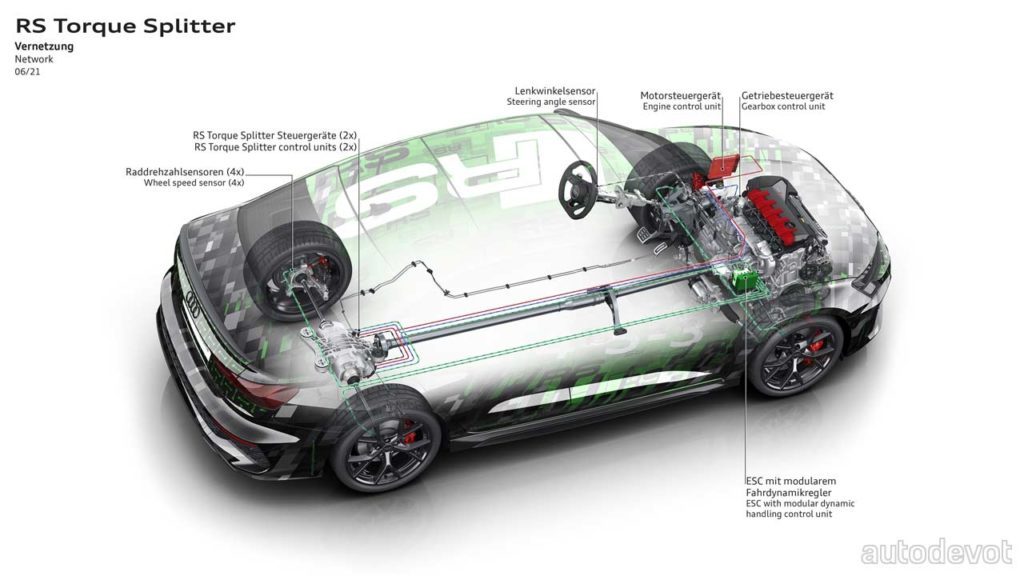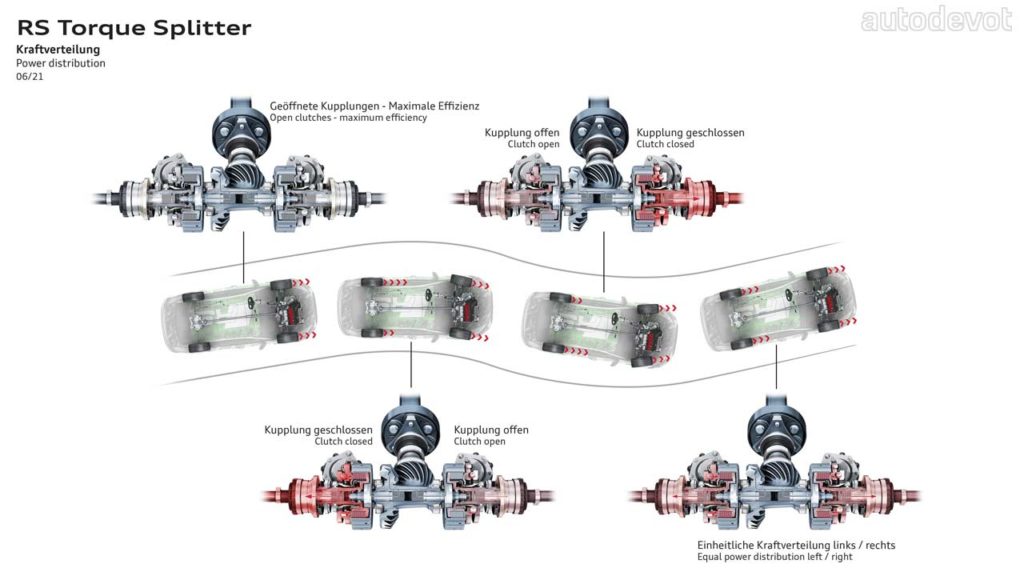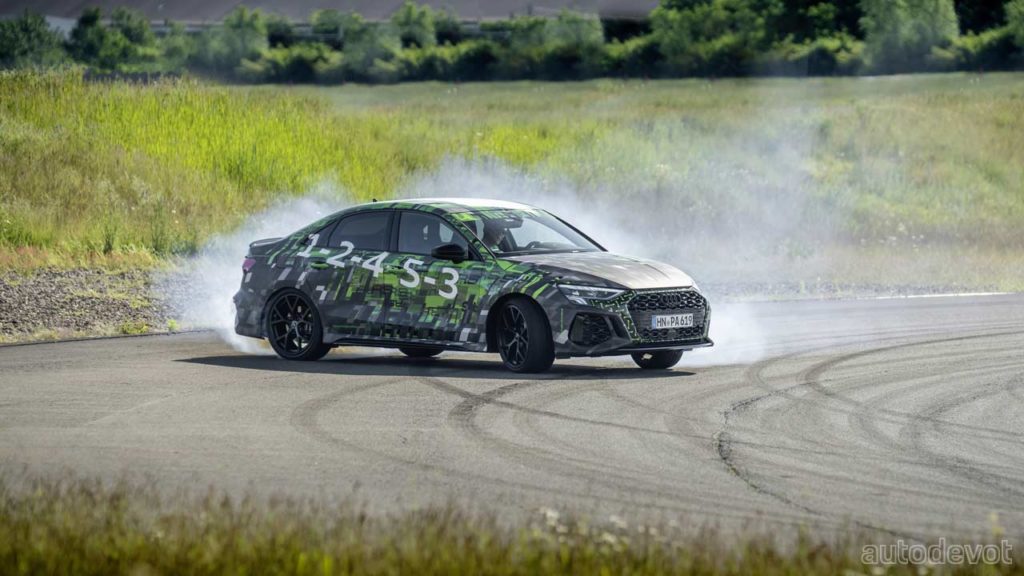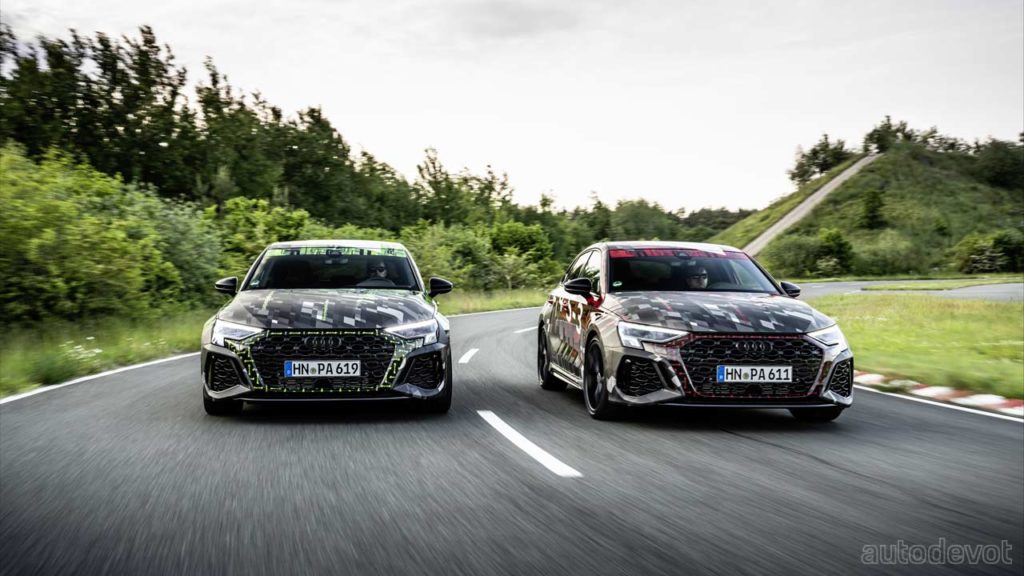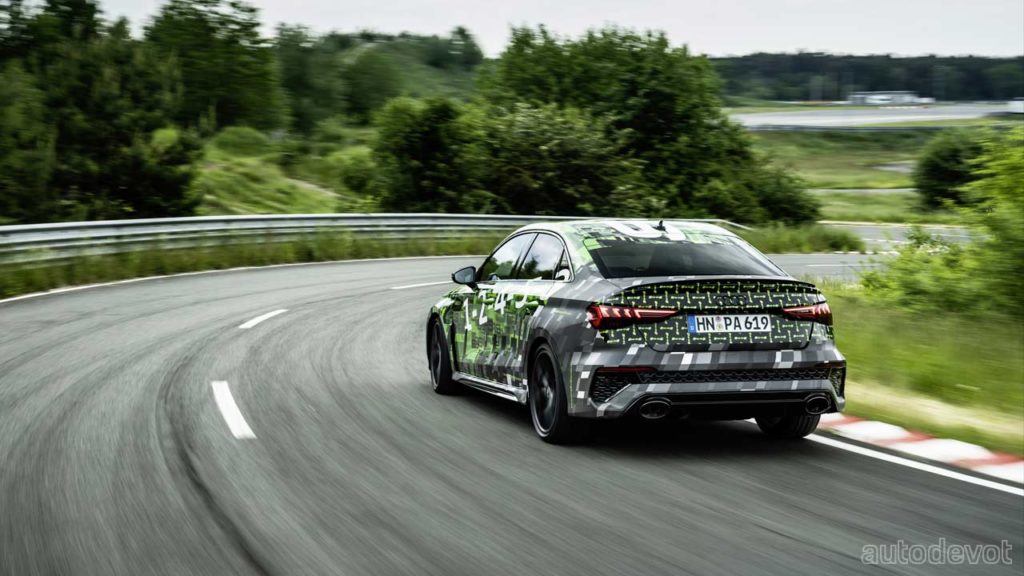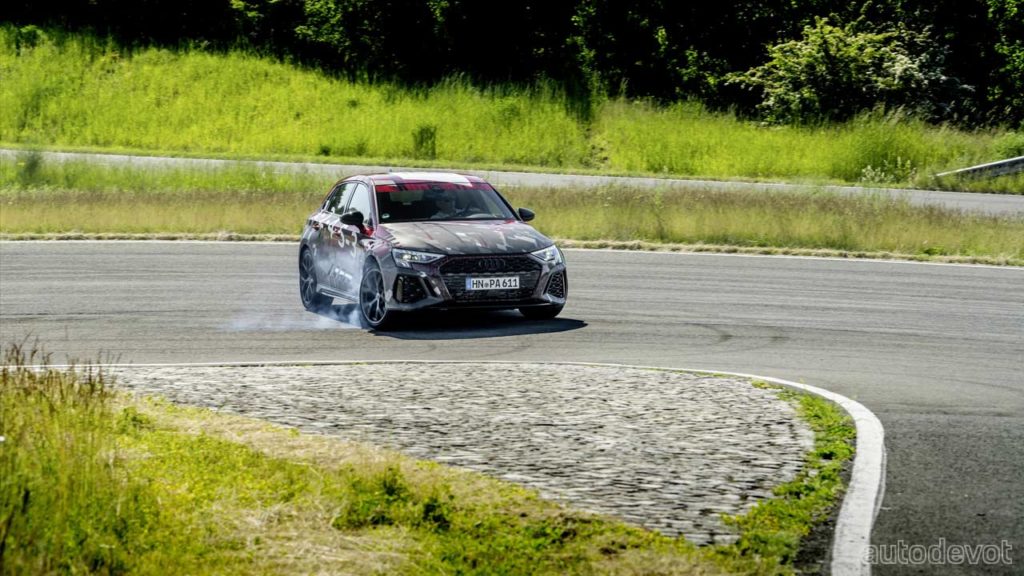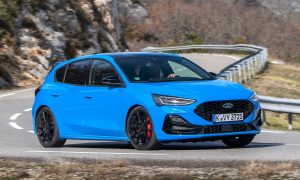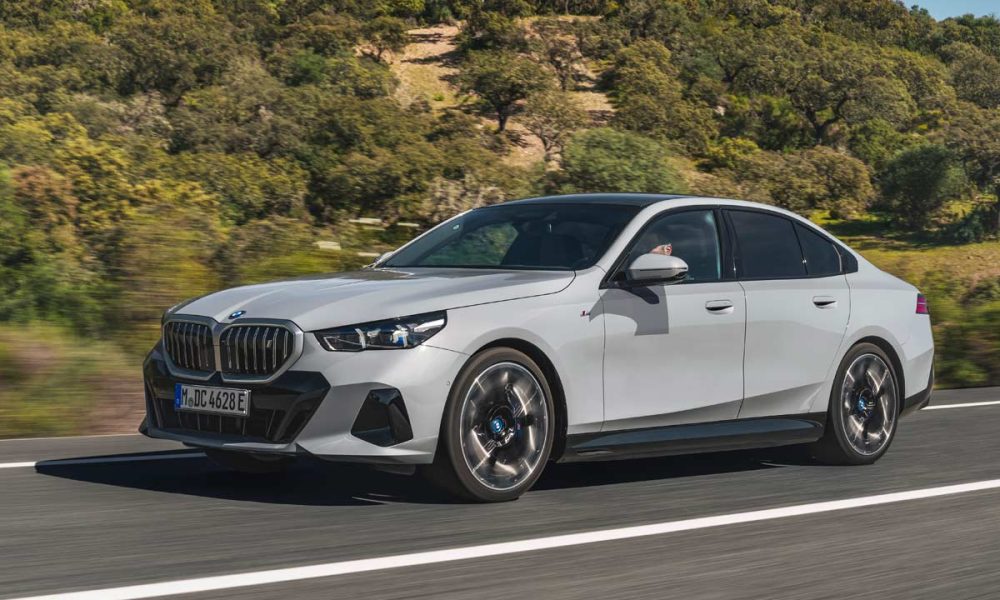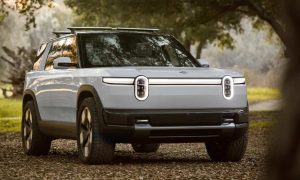New Golf R drivers must have experienced this already.
The 4th gen A3 lineup which currently includes Sportback and Sedan models, is soon getting the RS variants and Audi has shared some exciting new information. Speaking of which, the new RS 3 is the first Audi vehicle to feature the new ‘RS Torque Splitter’ — which as the name suggests, is specific to the RS models.
So what is this “RS Torque Splitter” anyway? Well, it is essentially a more sophisticated active rear differential that enables fully variable torque vectoring between the rear wheels. Unlike its predecessor which used a clutch package on the rear axle, the torque splitter uses an electronically controlled clutch pack on each drive shaft, and the idea is fairly self-explanatory.
When driving on closed roads, the torque splitter enables controlled drifts by channeling all of the engine power to the rear axle, to just one of the rear wheels — up to a maximum of 1,750 Nm (1,291 lb-ft) of torque, Audi said. Each of the two clutch packs has its own control unit, which use the electronic stabilization control’s wheel speed sensors to measure the wheel speeds. Other influencing factors include longitudinal and lateral acceleration, the steering angle, the position of the throttle pedal, the selected gear, and the yaw angle.
This new differential actually made its debut in the new Volkswagen Golf R, enabling a Drift mode. Of course, for Audi RS models, there’ll be a more sporty tuning. Factory test driver Frank Stippler had the following to say on how the torque splitter feels like in the RS 3 prototype —
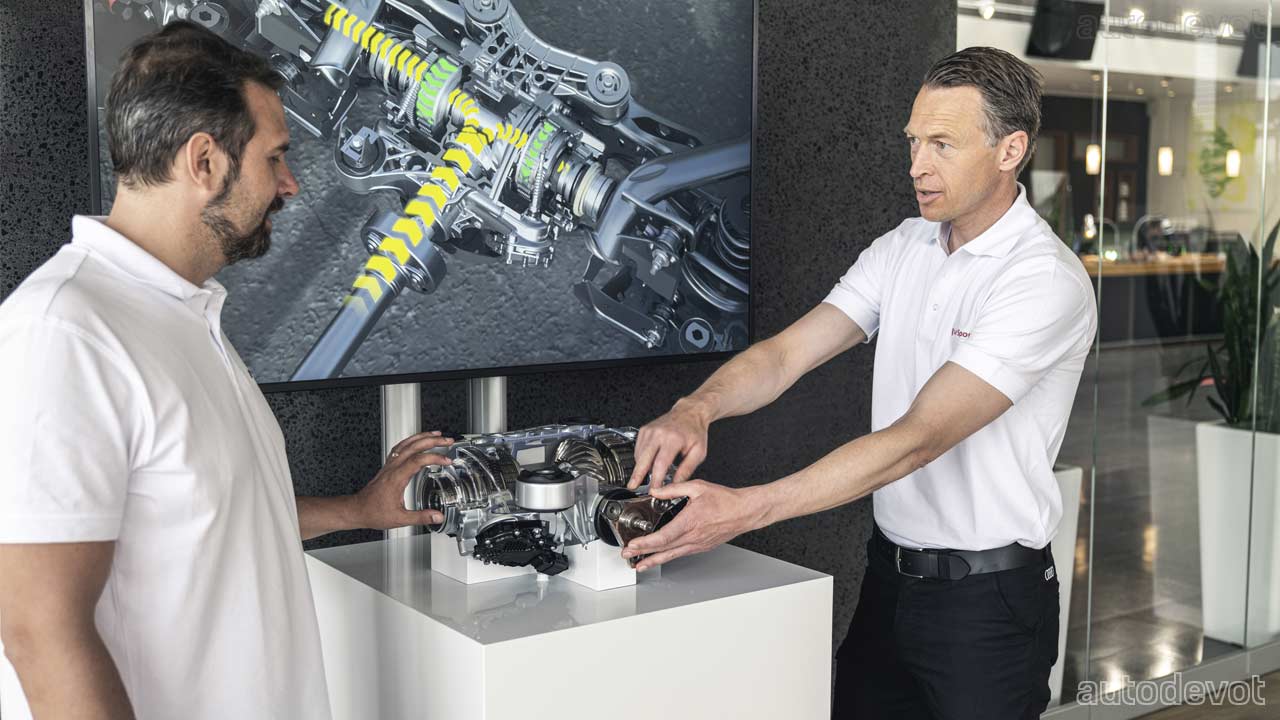 L-R: Meic Diessner, development and test engineer and Frank Stippler, racing and development driver
L-R: Meic Diessner, development and test engineer and Frank Stippler, racing and development driver
In general, the car is much more agile in its driving from the middle of the curve to the end and also when accelerating out of the curve. All-wheel drive cars have great tracking stability, but they tend to understeer at the very upper limits. We were looking for a solution that would minimize that behavior. The torque splitter distributes more weight onto the rear axle. With it, the car develops a driving dynamic that oversteers. And that’s where the Audi drive select system comes in, which helps meter that tendency based on use, road conditions and individual preferences. We can get really fast in RS Performance mode, the mode for circuit driving that is designed especially for semi-slick tires. For me, the RS torque splitter is a quantum leap in terms of agile driving. — Stippler
According to engineer Meic Diessner, the torque splitter is intelligent too. It can recognize if the road is wet or dry, for example, so that the driver doesn’t need to change the mode. Meaning, the car automatically reacts differently in RS Performance mode in wet conditions than it would on dry asphalt.
And yes, the “1-2-4-5-3” camouflage on the prototypes suggests that the new RS models will retain the straight-5 engine.

Leave a Reply
Note: Comments that are unrelated to the post above get automatically filtered into the trash bin.
